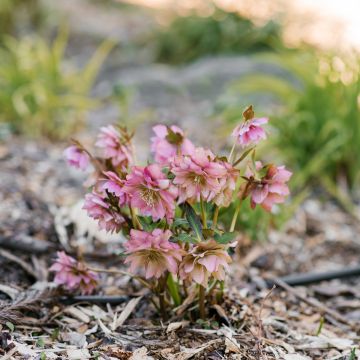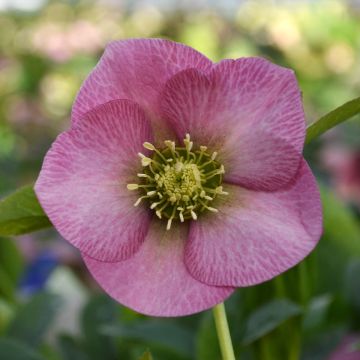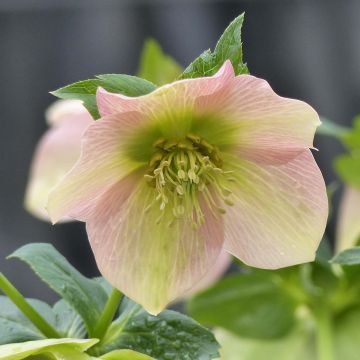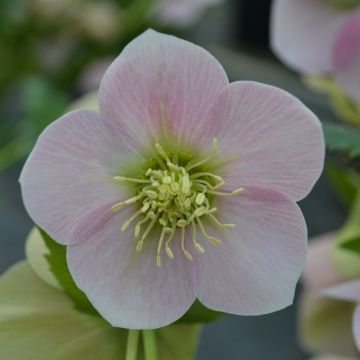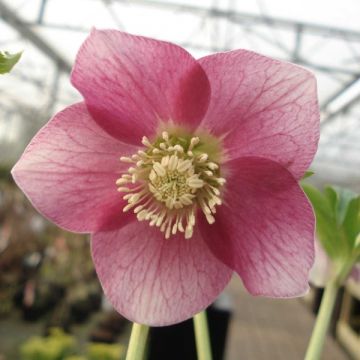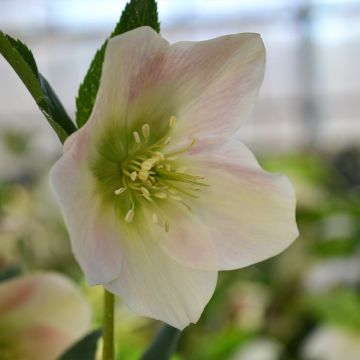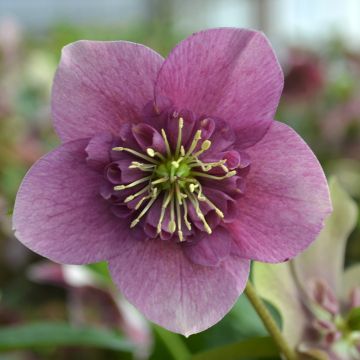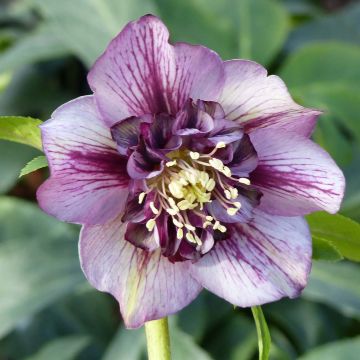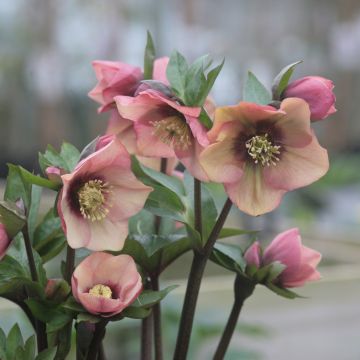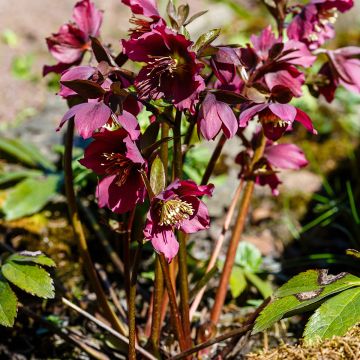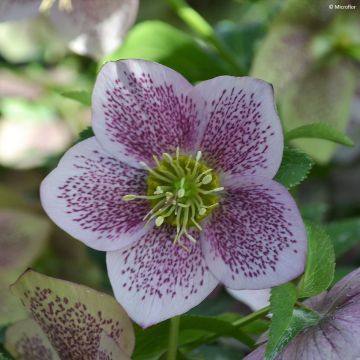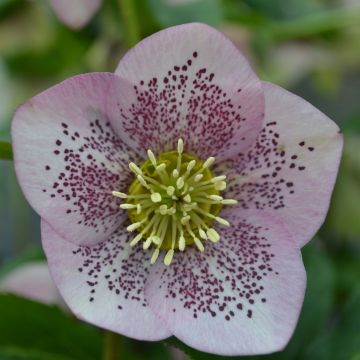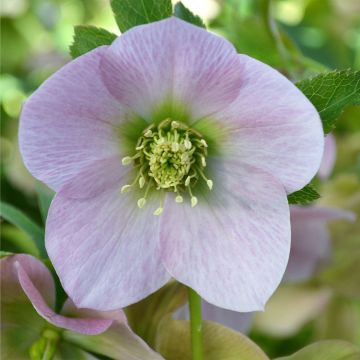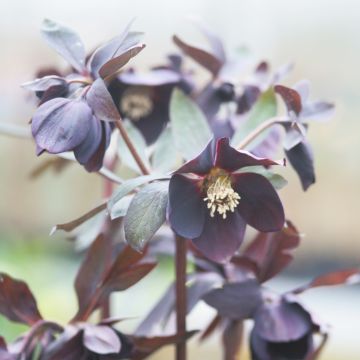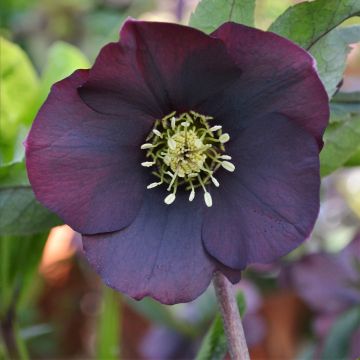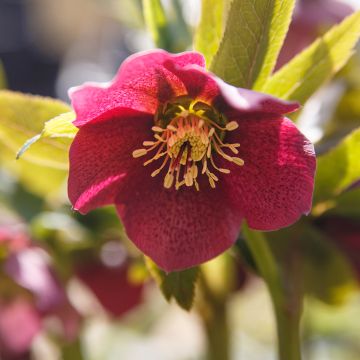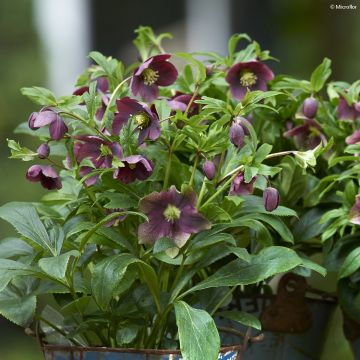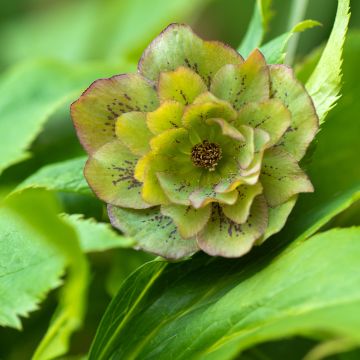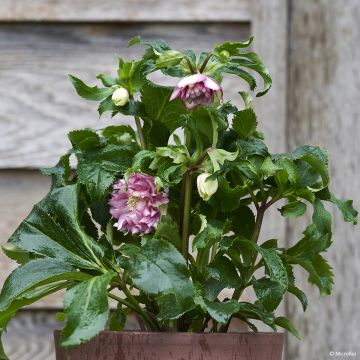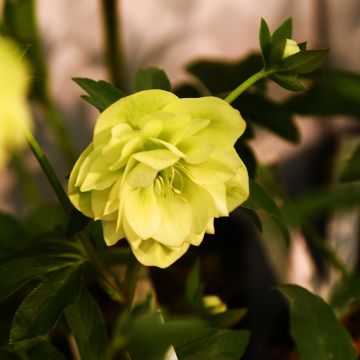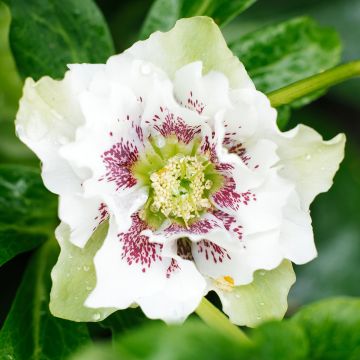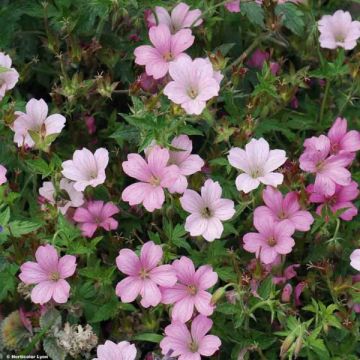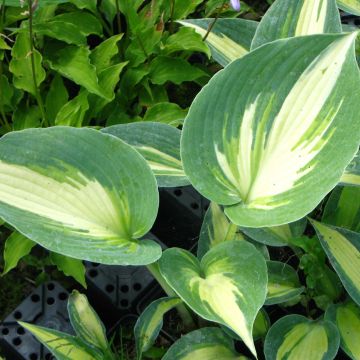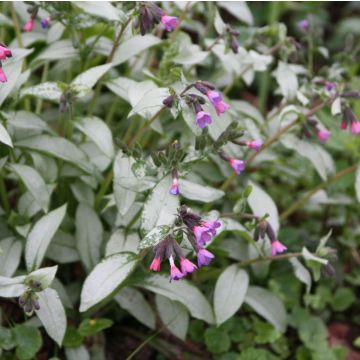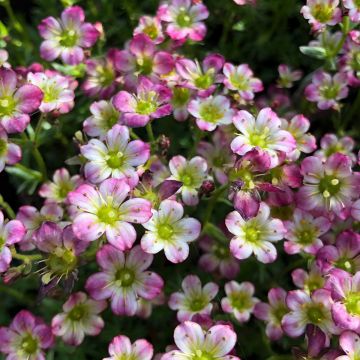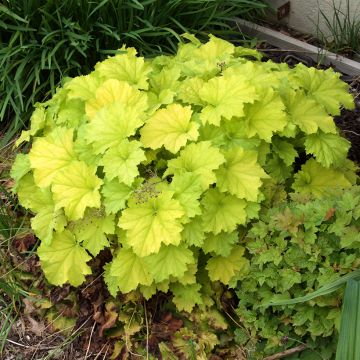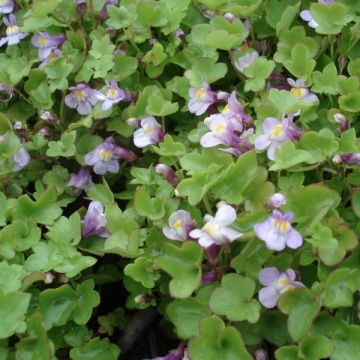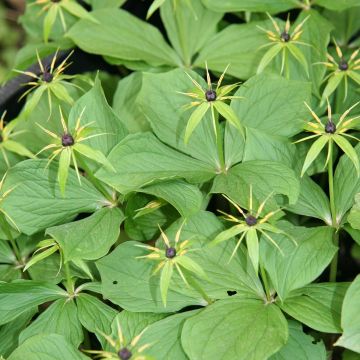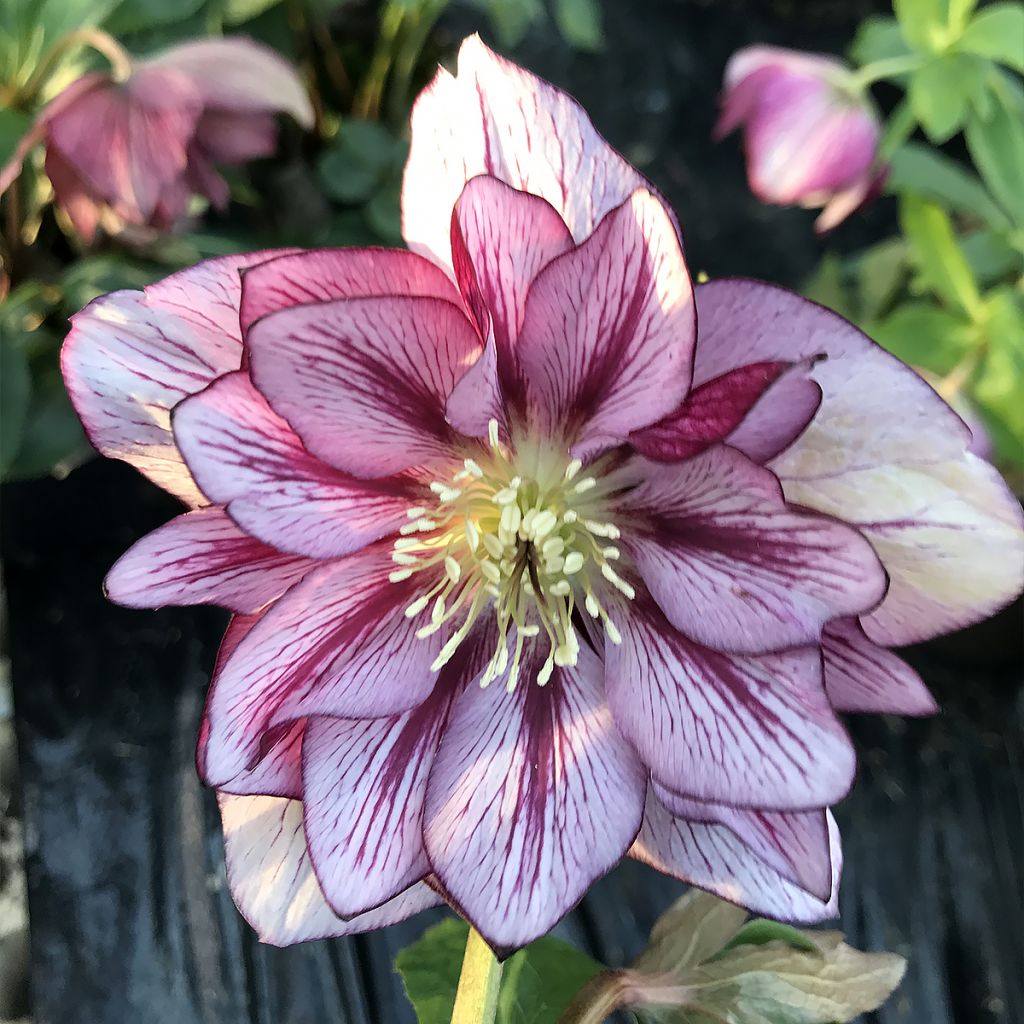

Hellébore ViV Suzanna - Helleborus orientalis
Helleborus hybridus ViV Suzanna
Helleborus x hybridus ViV Suzanna
Lenten Rose, Oriental Hellebore
Beautiful plant arrived without flowers at my daughter-in-law's (Christmas gift). I hope it will have at least one flower in the near future!
Michèle C, 23/01/2025
Why not try an alternative variety in stock?
View all →This plant carries a 12 months recovery warranty
More information
We guarantee the quality of our plants for a full growing cycle, and will replace at our expense any plant that fails to recover under normal climatic and planting conditions.
From €5.90 for pickup delivery and €6.90 for home delivery
Express home delivery from €8.90.

Does this plant fit my garden?
Set up your Plantfit profile →
Description
Oriental Hellebore Suzanna is a variety with romantic charm that will delight even the most demanding enthusiasts. Flowering from November onwards, this Lenten Rose produces double flowers in a mix of pink and creamy white shade, with a slightly crumpled appearance that is quite appealing. It is a robust and hardy perennial, easy to grow in all regions, even in heavy soil, although it prefers humus-rich soils. It will make beautiful borders in shaded areas and its fairly compact habit also makes it easy to grow in pots. Plant it under the shade of deciduous trees, where it will flower at the base in autumn.
Hellebore Suzanna is a member of the Ranunculaceae family, which includes about sixty genera and approximately 2500 species, mostly herbaceous. The type species Helleborus orientalis is native to Greece, Turkey, and the central and eastern Caucasus. It is a perennial plant that hybridises very easily with other species to produce, through random seedlings, hybrids with diverse colours and forms, so much so that these hybrids are rarely given variety names. They are distinguished by their shape and colour characteristics. Oriental Hellebores are hardy plants that can withstand temperatures as low as -15°C, naturally growing in forests, thickets, and clearings up to 2,000 m (7ft) altitude.
The cultivar Suzanna is a selection originating from Belgium. Suzanna is part of a large collection of hybrids selected for their compactness and abundance of flowers. Suzanna forms a clump 45 to 55 cm (18 to 22in) tall and about 40 cm wide, which will develop under the light shade of deciduous trees, or even under denser shade, such as that generated by conifers. Its foliage consists of palmate basal leaves, slightly dentate, dark green and glossy. These are evergreen leaves in winter, which actually live for only 8 months and are regularly replaced by new leaves.
Suzanna blooms in autumn, mainly from November to December, bringing light under often dark skies at that time. Its double flowers are composed of several rows of petals, with the size increasing from the centre to the periphery. The central petals are shorter and delicately crinkled, while the outer crown is well spread out. Their colour also evokes bygone times, with a soft pink, mixed with creamy white, giving this flowering an undeniable romantic charm. The greenish centre from which the stamens emerge enhances this effect, and if these flowers are pendulous, allowing the water to slide like an umbrella, it is to protect the heart from rotting. Hellebores do not like to be moved once established, and young shoots sometimes take time to flower. Therefore, be sure to choose their location carefully when planting.
This perennial adapts to neutral to moderately alkaline soils, and even slightly acidic ones, preferably rich soils that retain some moisture, although an established plant can tolerate dry conditions. It will be well placed under a leafy tree, which allows winter sun to pass through but protects it from the intense summer sun. It is an easy-to-grow plant and you can also grow it in a pot on your patio thanks to its compact habit. In this case, water it as necessary to prevent it from drying out.
Hellebores are valuable perennial plants for brightening up the dark autumn and winter days. You can plant Suzanna alongside other perennials or bushes with staggered flowering times to enjoy flowers throughout the year. For example, to take over from our Hellebore in a not too harsh climate and neutral soil, plant Loropetalum chinense Fire dance with its fuchsia pink flowers in strips from February onwards. Then, Brunneras with their small blue or white flowers, also very romantic, will be perfect in semi-shade to accompany spring. And to add some height to your border, go for Magnolia Fairy Blush, a hybrid Michelia with pink Lotus-like flowers and irresistible charm, accompanied by a pleasant fragrance.
Report an error about the product description
Flowering
Foliage
Plant habit
Safety measures
Botanical data
Helleborus
x hybridus
ViV Suzanna
Ranunculaceae
Lenten Rose, Oriental Hellebore
Cultivar or hybrid
ingestion
Cette plante est toxique si elle est ingérée volontairement ou involontairement.
Ne la plantez pas là où de jeunes enfants peuvent évoluer, et lavez-vous les mains après l'avoir manipulée.
Pensez à conserver l'étiquette de la plante, à la photographier ou à noter son nom, afin de faciliter le travail des professionnels de santé.
Davantage d'informations sur https://plantes-risque.info
Other Oriental Hellebore
Planting and care
The Oriental Hellebore Suzanna grows in any neutral to moderately calcareous soil, rich, light or clay, in partial or light shade, while being sheltered from cold and strong winds. This perennial should be planted from early autumn to spring. It thrives in deep, well-prepared soil mixed with a quantity of organic matter. To fertilise, use bone meal or another organic fertilizer. Water the plants well after planting and then add a layer of mulch 2 to 5 cm (1 to 2in) thick. Regularly remove faded leaves to improve flowering. Ensure a planting distance of 30 to 40 cm (12 to 16in) between each plant to encourage their development. Hellebores do not tolerate waterlogged ground, as it may cause it to rot.
The roots should not completely dry out in summer. Hellebores can be affected by a fungal disease transmitted by aphids, known as black spot disease. Remove the spotted leaves from evergreen species when the flower buds appear. Remove faded flowers after the seeds have fallen. They can also suffer from grey rot or die from collar rot. This often occurs due to poor growing conditions, in excessively wet situations.
On a balcony or patio, plant this perennial in a pot 4 to 5 times larger than it, as it needs space to develop its root system. Very hardy, this Hellebore can withstand freezing temperatures down to -15°C (5°F) or even lower.
Planting period
Intended location
Care
-
, onOrder confirmed
Reply from on Promesse de fleurs
Shade-loving perennials
Haven't found what you were looking for?
Hardiness is the lowest winter temperature a plant can endure without suffering serious damage or even dying. However, hardiness is affected by location (a sheltered area, such as a patio), protection (winter cover) and soil type (hardiness is improved by well-drained soil).

Photo Sharing Terms & Conditions
In order to encourage gardeners to interact and share their experiences, Promesse de fleurs offers various media enabling content to be uploaded onto its Site - in particular via the ‘Photo sharing’ module.
The User agrees to refrain from:
- Posting any content that is illegal, prejudicial, insulting, racist, inciteful to hatred, revisionist, contrary to public decency, that infringes on privacy or on the privacy rights of third parties, in particular the publicity rights of persons and goods, intellectual property rights, or the right to privacy.
- Submitting content on behalf of a third party;
- Impersonate the identity of a third party and/or publish any personal information about a third party;
In general, the User undertakes to refrain from any unethical behaviour.
All Content (in particular text, comments, files, images, photos, videos, creative works, etc.), which may be subject to property or intellectual property rights, image or other private rights, shall remain the property of the User, subject to the limited rights granted by the terms of the licence granted by Promesse de fleurs as stated below. Users are at liberty to publish or not to publish such Content on the Site, notably via the ‘Photo Sharing’ facility, and accept that this Content shall be made public and freely accessible, notably on the Internet.
Users further acknowledge, undertake to have ,and guarantee that they hold all necessary rights and permissions to publish such material on the Site, in particular with regard to the legislation in force pertaining to any privacy, property, intellectual property, image, or contractual rights, or rights of any other nature. By publishing such Content on the Site, Users acknowledge accepting full liability as publishers of the Content within the meaning of the law, and grant Promesse de fleurs, free of charge, an inclusive, worldwide licence for the said Content for the entire duration of its publication, including all reproduction, representation, up/downloading, displaying, performing, transmission, and storage rights.
Users also grant permission for their name to be linked to the Content and accept that this link may not always be made available.
By engaging in posting material, Users consent to their Content becoming automatically accessible on the Internet, in particular on other sites and/or blogs and/or web pages of the Promesse de fleurs site, including in particular social pages and the Promesse de fleurs catalogue.
Users may secure the removal of entrusted content free of charge by issuing a simple request via our contact form.
The flowering period indicated on our website applies to countries and regions located in USDA zone 8 (France, the United Kingdom, Ireland, the Netherlands, etc.)
It will vary according to where you live:
- In zones 9 to 10 (Italy, Spain, Greece, etc.), flowering will occur about 2 to 4 weeks earlier.
- In zones 6 to 7 (Germany, Poland, Slovenia, and lower mountainous regions), flowering will be delayed by 2 to 3 weeks.
- In zone 5 (Central Europe, Scandinavia), blooming will be delayed by 3 to 5 weeks.
In temperate climates, pruning of spring-flowering shrubs (forsythia, spireas, etc.) should be done just after flowering.
Pruning of summer-flowering shrubs (Indian Lilac, Perovskia, etc.) can be done in winter or spring.
In cold regions as well as with frost-sensitive plants, avoid pruning too early when severe frosts may still occur.
The planting period indicated on our website applies to countries and regions located in USDA zone 8 (France, United Kingdom, Ireland, Netherlands).
It will vary according to where you live:
- In Mediterranean zones (Marseille, Madrid, Milan, etc.), autumn and winter are the best planting periods.
- In continental zones (Strasbourg, Munich, Vienna, etc.), delay planting by 2 to 3 weeks in spring and bring it forward by 2 to 4 weeks in autumn.
- In mountainous regions (the Alps, Pyrenees, Carpathians, etc.), it is best to plant in late spring (May-June) or late summer (August-September).
The harvesting period indicated on our website applies to countries and regions in USDA zone 8 (France, England, Ireland, the Netherlands).
In colder areas (Scandinavia, Poland, Austria...) fruit and vegetable harvests are likely to be delayed by 3-4 weeks.
In warmer areas (Italy, Spain, Greece, etc.), harvesting will probably take place earlier, depending on weather conditions.
The sowing periods indicated on our website apply to countries and regions within USDA Zone 8 (France, UK, Ireland, Netherlands).
In colder areas (Scandinavia, Poland, Austria...), delay any outdoor sowing by 3-4 weeks, or sow under glass.
In warmer climes (Italy, Spain, Greece, etc.), bring outdoor sowing forward by a few weeks.

































